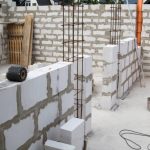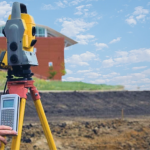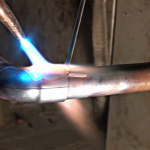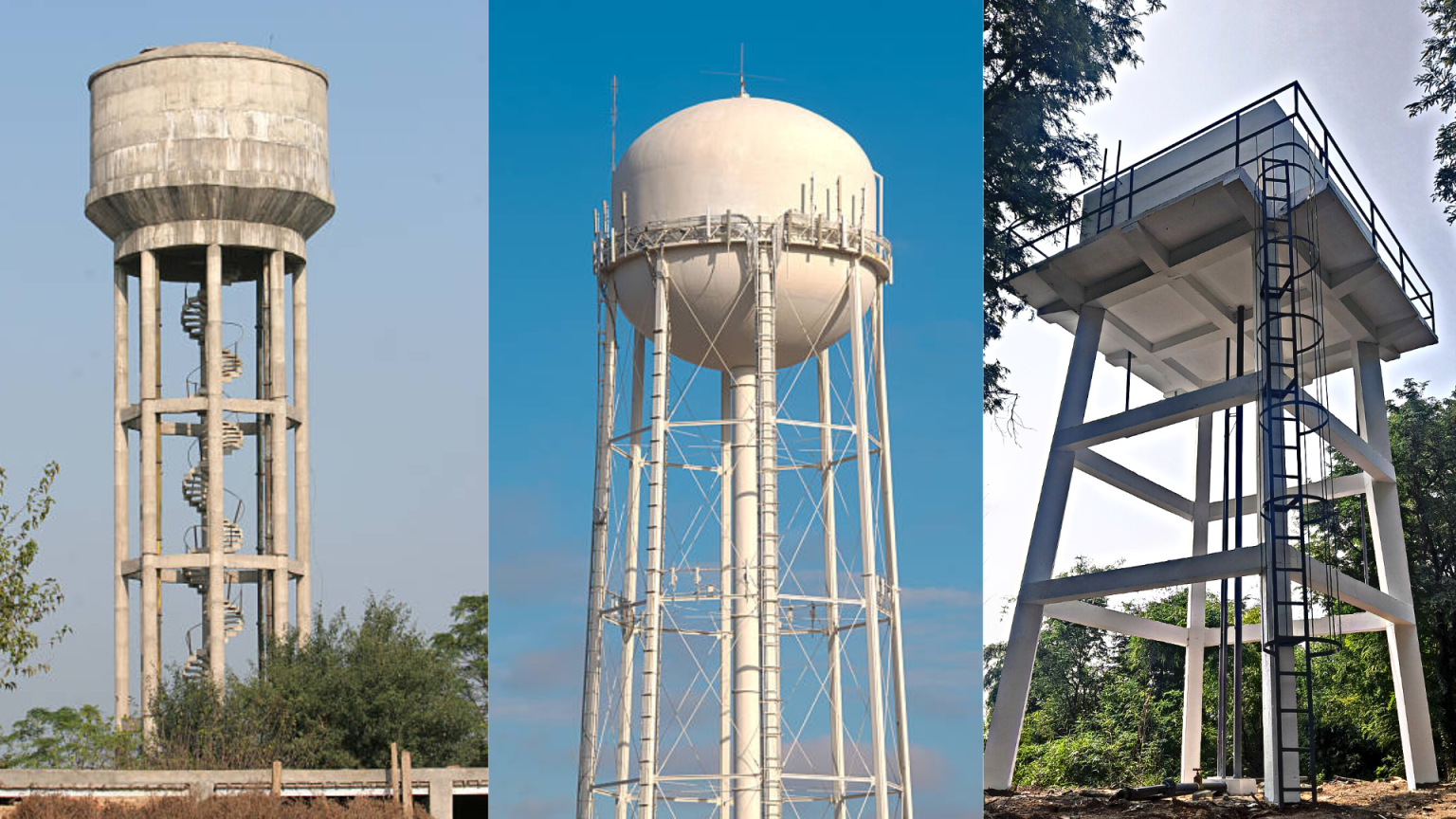
ELEVATED WATER STORAGE TANK

Water is required for a variety of activities in the household, including cooking, cleaning, bathing, washing clothes and utensils, and so on. It is simply a strong water supply system that can make water available at various points and for various applications throughout a house.

Elevated water tank systems will be common in large-scale communities. This kind of water storage keeps the water above ground. The structure is first built with beams and columns, and then the water tank is built on the bare frame structure (beams and columns). Since the water is stored above ground, its distribution is entirely dependent on gravitational force.
Elevated water storage tanks are used to store potable drinking water within a specific area or community. Elevated tanks allow the natural force of gravity to produce consistent water pressure throughout a system. Elevated water storage tanks can be designed using a wide range of shapes, sizes, and materials depending on the intended application and requirements of the distribution area.
Plumbing System for Elevated Water Tank
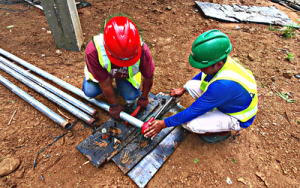
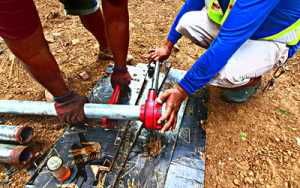
Gi pipe threading– to provide a more effective seal, especially for the pipes transporting liquids.
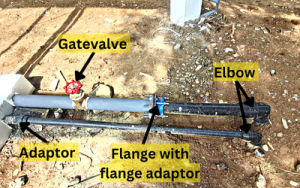
Gate valve: the most common type of valve in water supply systems is a gate valve. It is a linear-motion isolation valve that can either stop or allow flow. Gate valves are used to isolate specific sections of the water supply system during maintenance, repair, and new installation, as well as to reroute water flow throughout the piping system.
Elbow: it provides flexibility to change the pipe’s direction.
Adaptor: a fitting that allows two pipes to be connected together.
Flange with flange adaptor: to connect different kinds of pipe and connect to GI and HDPE.
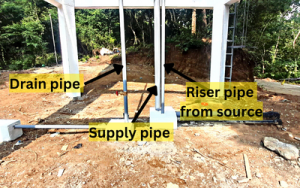
Drain pipe: a drain pipe must be installed to drain the water in the tank.
Supply pipe: a pipe that distributes water from a tank to different locations.

Over flow pipe: overflow pipes are installed on tanks to control the flow of extra liquid into the tank and divert it to a lower level in the event of an overfill situation.
Riser pipe: pipe carrying water from the source.
Components of Elevated Storage Tanks
Inlet and Outlet Pipes
Elevated water storage tanks typically have a common inlet and outlet pipe, whereas above-ground storage tanks can have either a common or separate inlet or outlet pipe. The purpose of these pipes is to bring water into the tank and allow it to exit. The purpose of having separate inlet and outlet piping configurations is to aid in water circulation within the tank. The common pipe (known as a riser) for an elevated water storage tanks typically runs up the center of the support structure that holds the tank. The inlet and outlet piping of an above-ground storage tank typically enter the tank through the bottom. In the separate inlet/outlet configuration, the inlet and outlet connections are typically located at opposite ends of the tank.
Overflow Pipe
An overflow pipe is included with each kind of tank. It is intended to allow water to exit the tank and enter the atmosphere if the water-level controls fail. They are typically designed to discharge into a storage tank and should never be connected directly to a sewer or storm drain. They should be screened or have a weighted flap to prevent living creatures from entering the pipe and should have an adequate air gap separation from the area into which they discharge.
Drain Connection
Regular inspections of all tanks are required. While some inspections can take place while the tank is still full of water, it is more common to drain a tank for inspection, cleaning, and repairs. Water in a tank can be reduced by turning off the pumps that fill it. They can, however, only be lowered to the height of the outlet pipe, and a tank should never be completely drained while in service. Once the water has been lowered as far as it can while still in service, a separate drain pipe can be opened to drain the remaining water.
Monitoring Devices
Monitoring devices are commonly installed in water storage tanks as well as other water distribution facilities. These monitoring devices are discussed in greater detail in another chapter. However, they will be briefly discussed here as well. The water level is one of the most important things to keep an eye on in storage tanks. Therefore, the majority have either a physical site gauge mounted on the tank’s exterior or level sensors that can send tank level information to distant locations. These devices frequently include high and low water level alarms.
Valves
To isolate a tank from the distribution system, a valve must be installed along the tank’s inlet/outlet piping. This valve can then be closed to disable the tank for maintenance and repairs. An altitude valve is a valve that is sometimes installed in tanks. This valve is designed to close when the tank begins to overflow.
Vents
Air ventilation is typically provided at the tops of tanks to allow air to escape as the tank fills and to allow air to enter as the tank level drops. These air vents must be large enough to keep the tank from collapsing and properly screened with a mesh size of at least 14″.
Access Hatches
Access to the inside of a tank must also be provided. On the top of storage tanks, there are at least one and sometimes several access hatches. These allow personnel to enter the tank for maintenance and inspection. To prevent surface water runoff from entering the tank, these hatches must be properly constructed with rims under the cover. There are also manways at the tank’s bottom for access when a tank has been drained and removed from service for maintenance and inspection.
Ladders
Access to tank tops and inside tanks must be provided. Ladders are commonly used to gain access. Spiral staircases are used instead of ladders in some above-ground water storage tanks.
Elevated water storage tanks are typically outfitted with three different ladders.
- The first one runs up the leg of the tower from the ground to the balcony around the tank.
- The second ladder leads from the balcony to the top of the tank roof.
- The third ladder provides inside access by running along the inside of the tank. Outside ladders should be installed six to eight feet off the ground or have a locked metal shield around the bottom to prevent unauthorized access.
Pipe Sizing
Correct pipe sizing ensures adequate flow rates at appliances while avoiding problems caused by over- and under-sizing.
Oversizing will imply:
- Excessive and unnecessary installation costs;
- Delay in getting hot water from outlets;
- Higher heat losses from hot water distribution pipes
Undersizing may lead to:
- Inadequate delivery from outlets, and possibly no delivery at some outlets when used concurrently;
- Some temperature and pressure variations at outlets, particularly showers and other mixers;
- A slight increase in noise levels.
Parts of Water Distribution System
1. Service Pipe
The pipe that connects the building’s distribution system to the water main or another source of potable water supply.
2. Supply Pipe/Distribution Pipe
A pipe within a structure or on the premises that transports water from the water service pipe to the point of use.
3. Riser
A water supply that extends one story or more in order to deliver water to branches or a group of fixtures.
4. Fixture Branch
The water supply pipe that connects the fixture supply pipe to the water distributing pipe.
5. Fixture Supply
A pipe that connects the fixture to the fixture branch.
Read More: Water Storage Tank | Types of Vents | Types of Pipes | Types of Fitting in Plumbing
Indirect System (Water Distribution of Cold Water Supply)
A water distribution system is a section of the water supply network that consists of components that transport potable water from a centralized treatment facility or wells to consumers to meet their needs for household, commercial, industrial, and firefighting purposes.
When the mains supply is insufficient to supply water to a significant number of properties during peak hours, indirect cold water systems are used. By using indirect cold water systems, users are putting less pressure on the supply of mains water. Due to the fact that they supply both hot and cold services, indirect cold water systems need more pipework and larger storage. If you have an indirect cold water supply, only the taps used for drinking water and food preparation will draw water from the main supply; all other taps will draw water from the storage cistern. Storage water is used in order to heat, bathe, and flush the toilet. Because there is less pressure on indirect supplies, they wear out faster than direct supplies. In addition to being quieter, indirect supplies provide some storage retention in the event that your main cold water supply is cut off.
Indirect System of Cold Water Supply
The indirect cold water supply system has only one drinking water outlet, which is located at the sink. The cold water storage cistern in the roof space has a minimum capacity of 230 liters. Aside from its normal supply function, it also serves as an adequate emergency storage in the event of a water main failure. The system is more expensive to install and needs more pipework than the direct system, but all cistern-supplied outlets experience the same pressure.
The most common type of water supply system in modern homes is an indirect system. Water enters the house through the rising main (the main pipe from which water enters the house), which is then branched off into the kitchen sink and storage tank, which are located either underground or overhead. Potable water only comes directly from municipal mains into the kitchen sink. The storage tank provides water to all of the other appliances. The storage tank is kept at a sufficient height to allow water to fall into fixtures via gravity at a sufficient pressure.
Pressure of water of Indirect Water Supply System
The water storage tank must be placed at a specific height in order to obtain sufficient water pressure; this is not always possible, and thus users on the upper floors suffer from low water pressure, causing functionalities such as showering, flushing, and so on to perform poorly.
Quality of water in Indirect Water Supply System
The process of storing water in tanks and supplying it to appliances has an impact on the quality of the water.
Distribution of Pipes of Indirect Water Supply System
Water enters the house through the main supply pipe and is routed to the kitchen sink and either an overhead or underground water storage tank. All other fixtures are then supplied with water from the storage tank.
Maintenance
Tanks, whether they are above ground or underground with pumps, need to be cleaned, maintained, and protected from UV rays on a regular basis.
Water Supply
When water is stored in a storage tank, it can be used at any time of day, but a specific storage capacity is required. Only that fixture’s water supply is interrupted if a pipe is damaged. The tank supplies water to the rest room fixtures.
Wastage & Leakages in the Water Supply Systems
- Minimal water wastage.
- The possibility of water leakage from a water storage tank
Capacity of Pumps at Source & Economy
- There is a significant additional cost for pipes and tanks.
- Since water will only be supplied below ground, moderate pressure will do.
During Damage in Water Supply Systems
- If a pipe in the indirect water supply system is damaged, only that fixture’s water supply is interrupted, the remaining fixtures continue to receive an uninterrupted water supply from the tank.


